
arduino
Internship 2025
Explore embedded systems and Arduino through projects like GPIO, motor and sensor interfacing, and communication protocols (UART, SPI, I2C). Build smart systems like streetlights, soil moisture monitoring, and RFID access. Control devices via Bluetooth, and interface sensors like BME280, DHT11, and flame sensors
1/ 2 Months
Online
8+ Live Projects
Dual Certification
Ultimate Step towards your Career Goals: Expert in IoT Arduino
Internship Benifits
Mentorship
Receive guidance and insights from industry experts.
Hands-on Experience
Gain practical skills in a real-world cutting-edge projects.
Networking
Connect with professionals and peers in your field.
Skill Development
Enhance your technical and soft skills.
Career Advancement
Boost your resume with valuable experience.
Certificate
Get a certification to showcase your achievements.
Arduino Internship Overview
Introduction to Embedded Systems
- Overview of embedded systems and their applications in everyday devices.
- Key components: microcontrollers, sensors, actuators, and communication protocols.
Introduction to Arduino
- Introduction to the Arduino platform and its ecosystem.
- Overview of Arduino IDE, boards, and programming basics for beginners.
GPIO Interface Part 1
- Understanding General Purpose Input/Output (GPIO) pins in Arduino.
- Basics of input/output control using digital pins.
GPIO Interface Part 2
- Advanced GPIO functionality: controlling LEDs, buttons, and switches.
- Interfacing with external hardware and creating basic circuits.
Motor Interface
- Interfacing motors with Arduino, including DC motors, stepper motors, and servo motors.
- Motor control using H-Bridge circuits and PWM signals.
Sensor Interface
- Connecting and reading data from various sensors (e.g., temperature, motion).
- Using analog and digital sensors for projects.
UART Communication – HC-05 Bluetooth
- Introduction to UART communication and how to use the HC-05 Bluetooth module for wireless communication.
- Simple applications like sending data between Arduino and smartphones.
SPI Communication Between Two Arduino
- Explanation of SPI protocol (Serial Peripheral Interface) and its use in inter-device communication.
- Practical example of connecting two Arduinos using SPI for data exchange.
I2C LCD
- Interfacing an I2C LCD display with Arduino for efficient data display.
- Understanding I2C protocol and wiring multiple devices using fewer pins.
-
Event Management System Using RFID
- Building a system to read RFID tags for event management or access control.
- Integrating Arduino with RFID readers for identification purposes.
-
Guide for I2C OLED with Arduino
- Interfacing I2C OLED displays for efficient visualization of data.
- Project examples such as displaying sensor readings or system status.
-
Smart Street Light Using LDR and IR Sensor
- Designing a smart street light system using Light Dependent Resistor (LDR) for daylight detection and IR sensors for motion detection.
- Energy-efficient lighting systems based on ambient light and motion sensing.
-
Monitoring Soil Moisturization with Arduino
- Creating an automated irrigation system by monitoring soil moisture levels using sensors.
- Connecting a soil moisture sensor to control water pumps.
Android App – RGB LED with Arduino & Bluetooth
- Controlling an RGB LED strip via Bluetooth using an Android app and Arduino.
- Setting up Bluetooth communication between Arduino and a smartphone app.
Guide for TCS230/TCS3200 Color Sensor with Arduino
- Interfacing a TCS230/TCS3200 color sensor to detect colors and display the result on an Arduino.
- Applications in color sorting or environmental sensing.
Control 2 DC Motors via Bluetooth
- Building a Bluetooth-controlled system to drive two DC motors using Arduino.
- Use of Bluetooth for wireless control of motor speed and direction.
BME280 Sensor with Arduino
- Using the BME280 sensor for monitoring temperature, pressure, and humidity.
- Collecting environmental data for weather stations or other IoT applications.
Complete Guide for DHT11/DHT22 Humidity and Temperature Sensor with Arduino
- Interfacing DHT11/DHT22 sensors for reading temperature and humidity data.
- Using the sensor data for applications like weather stations or environmental monitoring.
Flame Sensor Interfacing with Arduino for Fire Detection
- Integrating a flame sensor to detect fire or high temperatures.
- Setting up an alarm or triggering safety protocols based on fire detection.
Arduino EEPROM Explained – Remember Last LED State
- Using EEPROM memory to store the last state of an LED or device, even after a reboot.
- Applications in saving user preferences or device settings.
Interfacing Voltage Sensor with Arduino
- Interfacing a voltage sensor to measure input or output voltage levels.
- Applications in power monitoring systems.
Interfacing Capacitive Soil Moisture Sensor with Arduino
- Connecting a capacitive soil moisture sensor to monitor soil water content.
- Creating an automated irrigation or plant monitoring system.

Looking for in-depth Syllabus Information? Explore your endless possibilities in IoT(Arduino) with our Brochure!
share this detailed brochure with your friends! Spread the word and help them discover the amazing opportunities awaiting them.
Project Submission: Example Output Screenshots from Our Clients
Take a look at these sample outputs crafted by our clients. These screenshots showcase the impressive results achieved through our courses and projects. Be inspired by their work and visualize what you can create!







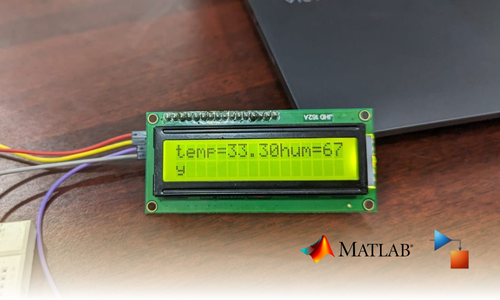

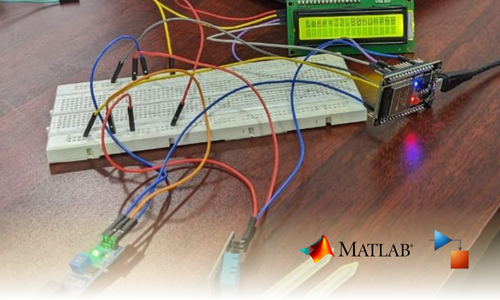
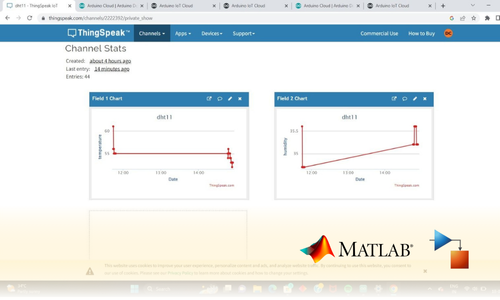
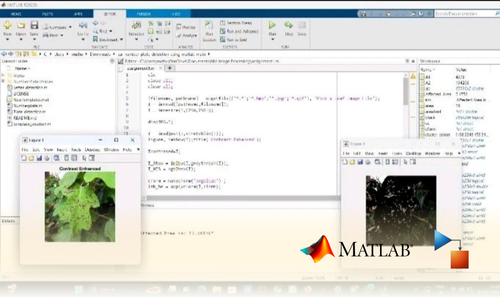
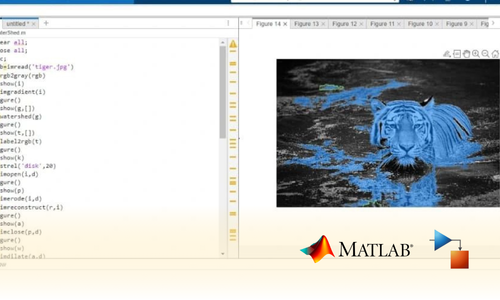
Dual Certification: Internship Completion & Participation
Earn prestigious Dual Certification upon successful completion of our internship program. This recognition validates both your participation and the skills you have honed during the internship
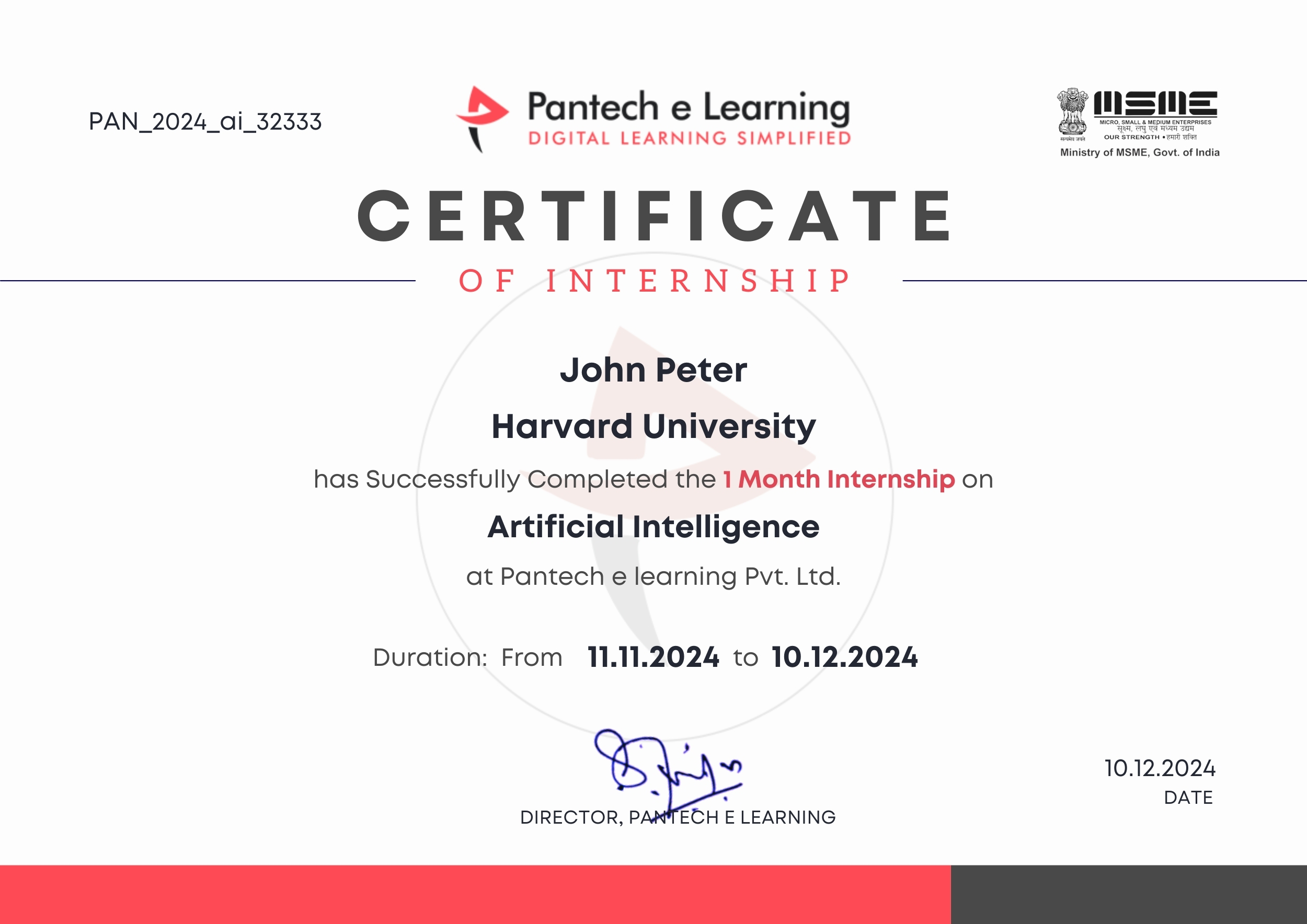

How does this Internship Program Work?
Step 1 Enroll in the Program
- Get a Mentor Assigned
- Presentations & Practice Codes
- Learn at your Flexible Time
- Apprehend the concepts
Step 2 Project Development
- Implement Skills Learn
- Develop Projects with assistance
- Get Codes for Reference
- Visualise the Concepts
Step 3 Get Certified
- Certificate of Internship
- Project Completion Certificate
- Share on social media
- Get Job Notifications
Choose Your Plan fit your needs
Master the Latest Industrial Skills. Select a technology domain & kick off your Internship immediately.
1 Month
₹1999/-
₹999/-
- Internship Acceptance Letter
- 90 Days from the date of payment
- 4 LIVE intractive Mastermind Sessions
- 4+ Capstone Projects & Codes
- Full Roadmap
- Internship Report
- 1 Month Internship Certificate
2 Month
₹3299/-
₹1899/-
- Internship Acceptance Letter
- 180 Days from the date of payment
- 4 LIVE interactive Mastermind Sessions
- 12+ Capstone Projects & Codes
- Full Roadmap
- Internship Report
- Participation Certificate
- 2 Month Internship Certificate
Our Alumni Employers
Curious where our graduates make their mark? Our students go on to excel in leading tech companies, innovative startups, and prestigious research institutions. Their advanced skills and hands-on experience make them highly sought-after professionals in the industry.


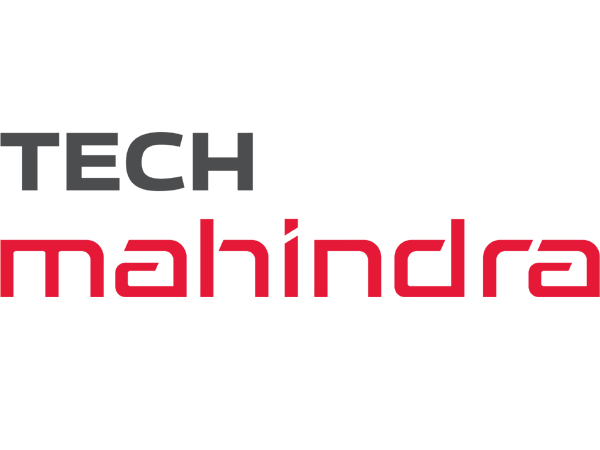



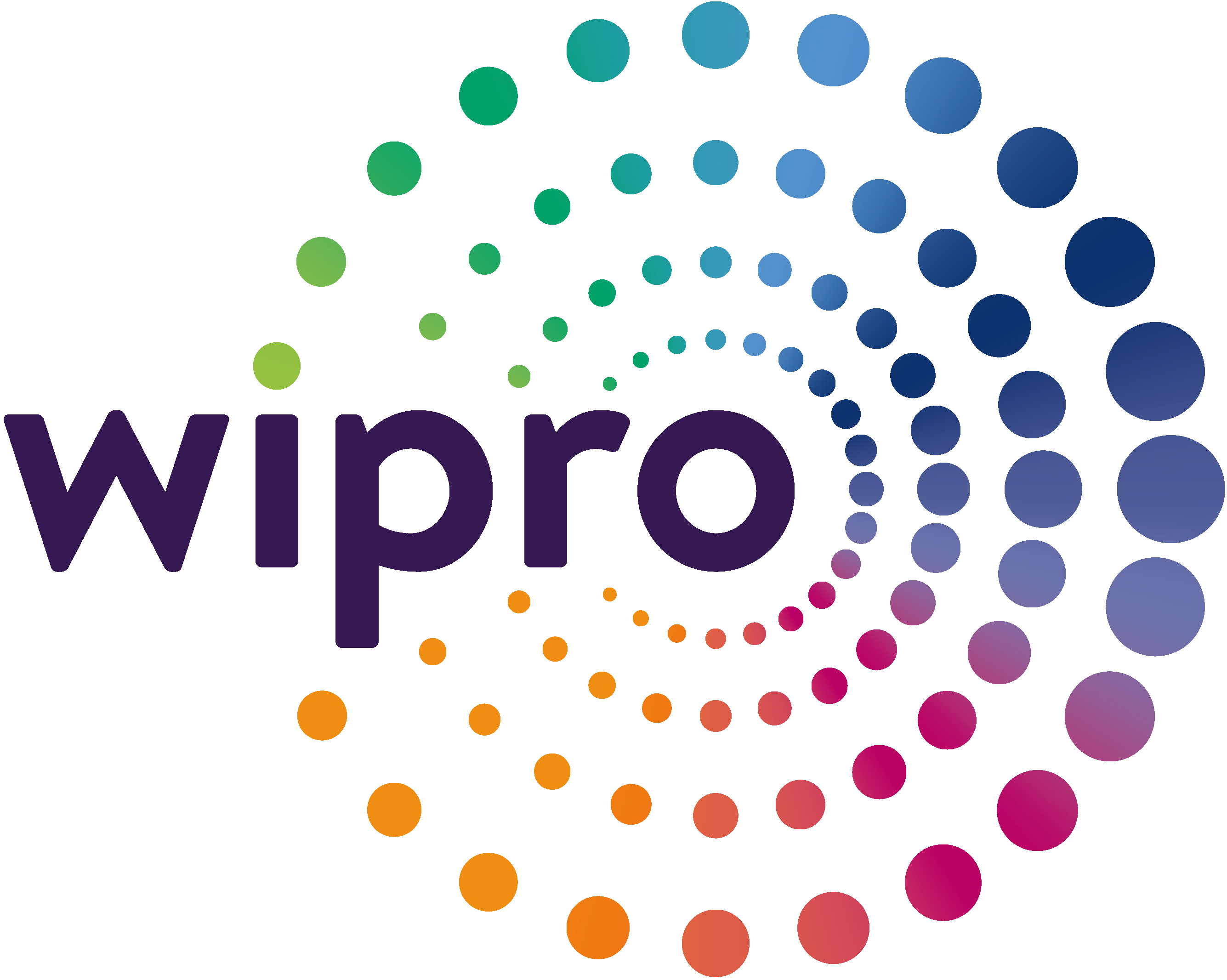


EXCELLENTTrustindex verifies that the original source of the review is Google. I recently completed my Python internship under the guidance of Mentor poongodi mam We learnt so many new things that developed my knowledge.this experience is good to learnTrustindex verifies that the original source of the review is Google. I completed my python internship guidance of mentor poongodi mam. She thought us in friendly qayTrustindex verifies that the original source of the review is Google. Poongodi mam done very well She took the class very well When we ask any doubt without getting bored she will explain,we learned so much from mam,marvelousTrustindex verifies that the original source of the review is Google. I have handled by poongodi mam.domain python intership...was goodTrustindex verifies that the original source of the review is Google. I recently completed Python internship under the guidance of poongodi mam who excelled in explaining concepts in an easily understandable wayTrustindex verifies that the original source of the review is Google. Fantastic class we were attended..we got nice experience from this class..thank you for teaching python mam...Trustindex verifies that the original source of the review is Google. -The course content was well-structured - I gained valuable insights into microcontrollers, sensors, and programming languages- The workshop was informative, interactive, and challenging, pushing me to think creatively. Ms Jimna our instructor her guidance and feedback helped me overcome obstacles and improve my skills.Trustindex verifies that the original source of the review is Google. The learning experience was really worth since more than gaining just the knowledge all of the inputs were given in a friendly and sportive manner which then made it a good place to learn something with a free mindset... 👍🏻Trustindex verifies that the original source of the review is Google. I recently completed my full stack python intership under the guidance of mentor Gowtham,who excelled in explaining concepts in an easily understand mannerTrustindex verifies that the original source of the review is Google. Gowtham-very interesting class and I learning so many things in full stack python development and I complete my internship in Pantech e learning and it is useful for my career
FAQ
What is an embedded system?
An embedded system is a specialized computing system designed to perform a dedicated function within a larger system. It typically includes hardware and software components that are optimized for a specific task.
What is Arduino?
Arduino is an open-source electronics platform based on easy-to-use hardware and software. It consists of a microcontroller, development environment (IDE), and various input/output pins to interface with sensors, motors, and other devices.
What is GPIO (General Purpose Input/Output)?
PIO refers to the pins on a microcontroller that can be configured to either input or output digital signals. These pins are used to interface with devices like switches, sensors, LEDs, and relays.
How can I interface a motor with Arduino?
Motors can be controlled using an H-Bridge or a motor driver like L298N or L293D, which allows Arduino to manage the direction and speed of DC or stepper motors through PWM signals.
How do I use a TCS230/TCS3200 color sensor with Arduino?
The TCS230/TCS3200 is a color sensor that can detect RGB color values. You interface it with Arduino using digital pins for output frequency. The Arduino reads these frequencies, converts them into RGB values, and can display or use this data for further processing.
How can I use a flame sensor with Arduino for fire detection?
A flame sensor detects infrared light from flames. It outputs a signal to Arduino, which can be used to trigger an alarm or activate other safety measures like turning on a water pump or sending notifications.
Start Your Tech Journey Today
Sign Up for Exclusive Resources and Courses Tailored to Your Goals!
© 2025 pantechelearning.com

